Emirates Development Bank: The Lost Camel
In a striking effort to raise environmental awareness, Emirates Development Bank (EDB) has launched “The Lost Camel” campaign. This innovative initiative features a life-size, 3D-printed camel made from recycled PetG filament and plastic collected from the desert by EDB staff. The campaign poignantly illustrates the severe impact of plastic pollution on desert wildlife, particularly camels.
The Story of The Lost Camel
“The Lost Camel” is not just an artistic endeavor but a powerful symbol of the environmental challenges faced by the UAE. Inside the camel’s stomach is the average amount of plastic that desert camels consume, leading to their untimely deaths. This visual representation serves as a stark reminder of the dire consequences of plastic pollution on local wildlife.
The life-size camel began its journey near campsites in the desert, making a strong visual impact on campers and passersby. Its journey culminated at COP 28 in Dubai, where it became a focal point, emphasizing the urgent need for local and global environmental action.
Raising Awareness and Sparking Change
The campaign, created by Livingroom Communication for EDB, aims to drive home the importance of sustainable practices and environmental responsibility. By highlighting the plight of desert camels, EDB underscores the broader issue of plastic pollution and its devastating effects on ecosystems.
The choice of a 3D-printed camel is symbolic and strategic. Using recycled materials for the camel’s construction not only promotes recycling but also demonstrates practical applications of sustainable practices. This innovative approach helps connect with a wide audience, from environmental activists to everyday citizens, fostering a collective sense of responsibility.
Impact at COP 28
At COP 28, “The Lost Camel” stole the show, drawing significant attention and sparking conversations about environmental conservation. Its presence served as an uncomfortable but necessary reminder of the ongoing battle against plastic pollution. The camel’s journey from the desert to an international stage highlighted the local efforts needed to combat global environmental issues.
The campaign’s success at COP 28 also underscores the role of financial institutions like EDB in promoting sustainability. By leveraging their resources and influence, banks can play a crucial part in driving environmental initiatives and encouraging sustainable practices across various sectors.
Community Engagement and Future Goals
Emirates Development Bank’s initiative extends beyond the campaign itself. It reflects a broader commitment to environmental stewardship and community engagement. The campaign has already inspired many to take action, from reducing plastic use to participating in clean-up drives.
Looking ahead, EDB aims to expand its environmental initiatives, partnering with local communities, businesses, and governments to foster sustainable development. The bank’s vision includes ongoing efforts to reduce plastic waste, promote recycling, and support innovative projects that benefit the environment.
Conclusion
“The Lost Camel” by Emirates Development Bank is a compelling campaign that highlights the pressing issue of plastic pollution in the UAE. Through a creative and impactful approach, EDB has successfully raised awareness and inspired action. The campaign not only addresses a critical environmental problem but also sets a precedent for how financial institutions can contribute to sustainability. As the journey of “The Lost Camel” continues to inspire, it serves as a powerful call to action for everyone to join the fight against plastic pollution and protect our planet.

